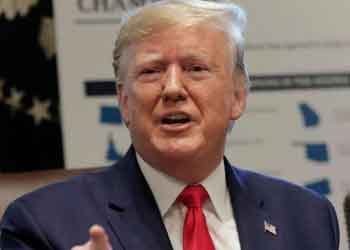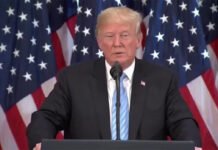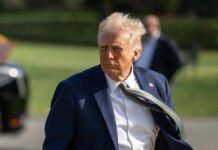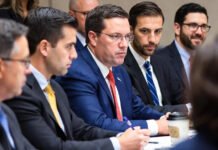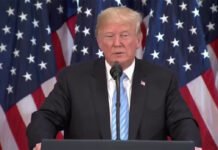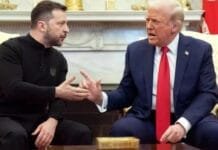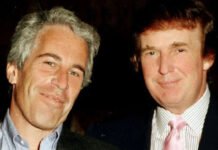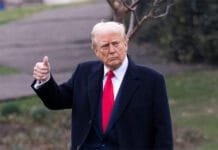INVC NEWS WASHINGTON, D.C. — The President Donald Trump is scheduled to visit Saudi Arabia this month, marking a pivotal moment in U.S.–Middle East relations. As preparations intensify ahead of the high-profile diplomatic mission, the United States has already signaled a bold policy stance by granting initial approval for the sale of $3.5 billion worth of air-to-air missiles to the Kingdom. This move, announced by the U.S. Defense Security Cooperation Agency (DSCA), underscores Washington’s strategic commitment to its Gulf ally and could be a precursor to a series of high-value defense and trade agreements.
Massive Missile Deal Underscores Strengthening Ties
The proposed arms package, spearheaded by RTX Corp, includes 1,000 AIM-120C-8 Advanced Medium-Range Air-to-Air Missiles (AMRAAMs). These state-of-the-art munitions are designed to enhance the Saudi Royal Air Force’s capabilities, particularly in the face of growing regional threats.
The DSCA stated that the arms deal “supports the foreign policy and national security objectives of the United States”, pointing out that a secure Saudi Arabia contributes to political stability and economic prosperity in the Gulf. The package also includes guidance systems, spare parts, and comprehensive technical support—highlighting the depth of the military cooperation between the two nations.
Strategic Manufacturing and Deployment
The missiles will be produced in Tucson, Arizona, by RTX Corp, formerly known as Raytheon Technologies, a key player in the global defense industry. The AIM-120C-8 is among the most advanced in its class, boasting enhanced range, precision targeting, and resistance to electronic jamming. These features make it a critical asset for Saudi Arabia’s fleet of F-15 fighter jets, which is the second largest in the world after the United States.
Once deployed, these missiles will significantly bolster Riyadh’s ability to respond to aerial threats across a volatile region. The approval further reflects America’s trust in the operational maturity of the Saudi air force and its role as a cornerstone of security in the Gulf.
Congressional Oversight and Potential Roadblocks
While the Trump administration’s approval marks a significant milestone, the proposed arms deal must now pass through the U.S. Congress, where it faces a potentially turbulent debate. Lawmakers on both sides of the aisle have previously expressed strong reservations about American military support to Saudi Arabia, especially in light of past human rights concerns.
The 2015 Saudi-led intervention in Yemen drew intense criticism after multiple civilian casualties were reported. The situation was further inflamed by the 2018 murder of journalist Jamal Khashoggi at the Saudi consulate in Istanbul. According to U.S. intelligence assessments, the killing was carried out on the orders of Crown Prince Mohammed bin Salman, a charge the Saudi government vehemently denies.
Given these issues, Congressional opposition could threaten to delay or derail the missile deal, even as strategic imperatives push the two countries closer together.
Trump’s Deepening Ties with the Gulf Region
Donald Trump has long maintained a strong rapport with Gulf monarchies, especially Saudi Arabia. His decision in 2017 to make Riyadh his first overseas visit as President was a dramatic departure from tradition and a clear signal of his administration’s foreign policy priorities. During that trip, defense, counterterrorism, and trade agreements worth hundreds of billions were announced, setting a new tone for U.S.–Saudi engagement.
Now, in 2025, Trump is once again prioritizing Saudi Arabia, reaffirming his alignment with the Kingdom’s leadership. Although he briefly traveled to Italy to attend the funeral of Pope Francis, his upcoming Saudi trip is poised to reignite diplomatic, economic, and security alliances in the region.
Economic and Geopolitical Implications of the Visit
The missile sale is just one dimension of what could become a multi-faceted diplomatic breakthrough. Analysts anticipate the Trump visit may yield several major announcements, including expanded energy cooperation, cybersecurity initiatives, and perhaps even new investment deals in real estate and infrastructure.
Saudi Arabia is also undergoing massive economic transformation under Vision 2030, spearheaded by Crown Prince Mohammed bin Salman. The Kingdom’s ambitions to diversify its economy beyond oil present lucrative opportunities for American investors, contractors, and defense manufacturers. Trump’s presence could act as a catalyst, drawing fresh attention and capital toward these initiatives.
Revival of the Trump Doctrine in the Middle East
Trump’s re-engagement with Saudi Arabia could be viewed as a revival of his administration’s “America First” doctrine, which emphasized bilateral partnerships, transactional diplomacy, and strategic defense sales. His return to the Kingdom comes at a time when the Biden administration has faced challenges maintaining a cohesive Gulf strategy, especially with recent Iran-backed Houthi aggression in Yemen and tensions surrounding oil production quotas.
If successful, the visit will reaffirm Trump’s image as a dealmaker who understands the value of pragmatic alliances in securing American interests abroad. His approach could set a new standard for future U.S. engagements in the region, possibly influencing the strategies of his political successors and competitors alike.
Saudi Arabia’s Expanding Role as a Regional Power
With upgraded weaponry and stronger ties with the U.S., Saudi Arabia is positioning itself as a formidable regional power, capable of asserting its influence across the Middle East. The acquisition of the AIM-120C-8 missiles will enhance Riyadh’s deterrence capabilities against regional adversaries, notably Iran and its proxy militias.
Moreover, the Kingdom’s proactive role in mediating peace efforts, managing oil markets via OPEC+, and spearheading technological investments in AI and green energy further cements its stature as a leader in shaping the region’s future.
Conclusion: A Pivotal Moment in U.S.–Saudi Relations
Trump’s upcoming visit to Saudi Arabia, coupled with the $3.5 billion missile deal, represents more than just a diplomatic engagement. It is a strategic recalibration of U.S. foreign policy in the Gulf, a reaffirmation of defense cooperation, and potentially the start of a new chapter in regional geopolitics.
As Congress deliberates the approval of the arms deal, and as Trump lands in Riyadh, the world will be watching closely. The outcome of this visit could redefine alliances, reshape defense priorities, and mark a new era in U.S.–Middle East relations, with Donald Trump once again at the helm of the conversation.

